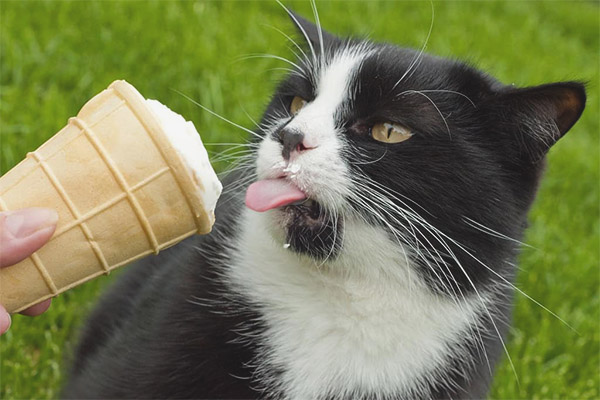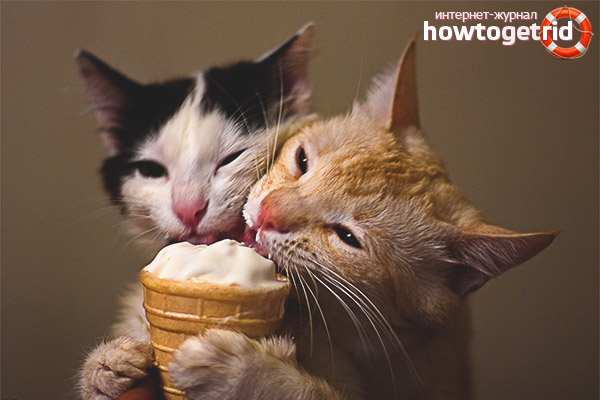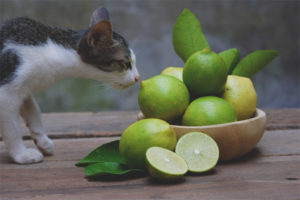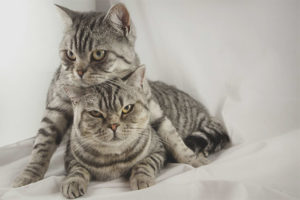The content of the article
“A cat wants milk!” - this line from a children's poem does not go out of the head of many people, it does not matter whether they have this pet or have never had it. The very first thought that comes to mind at the sight of a stray kitten is to pour a saucer of milk to the baby. Many cat lovers ascribe human emotions and needs to pets, and this also applies to eating habits. Why not give the fluffy companion the same delicacy that its owner likes, for example, ice cream?
From the history of cat food
Industrial feed appeared in stores relatively recently. For centuries, cats ate the same foods as humans. The difference was in the absence of heat treatment: meat and fish were often given raw. Milk was not spared, sometimes even bread was crumbled into it. In the 1930s, veterinarians began advising owners to reconsider well-established views on animal nutrition and remove milk and carbohydrates in the form of bread from the cat menu.A cat is a predator in whose diet the meat should prevail, and only water should be drunk.
Views on feeding changed, now most animal lovers just buy ready-made feed, dry or wet. Fortunately, the choice is large enough. But, noticing a pet's interest in dairy products and delicacies like ice cream, many people think about whether to pamper the purr with goodies regularly? But is it harmful to give ice cream to a cat? It is worth considering the known facts.
Where do animals have an interest in sweets?
A healthy cat will not be harmed by a small amount of any delicacy. Imposing a full bowl of ice cream is definitely not worth it: such a dish should not replace even one full meal. The evolution of the caudate went its own way: cats, unlike humans, do not distinguish between sweet taste. They simply will not be able to enjoy the food, which includes sugar or its substitutes. Moreover, the cat's body does not produce insulin, which is needed for the processing of sugars. Sweet is simply not digested.
Cats are attracted by the milky smell familiar from birth. The increased fat content of the product also plays an important role: cats instinctively understand that such a meal will be faster to get enough.
Ice cream damage
When an animal eats tasty, but not the most useful food, it is saturated, but does not receive the necessary components for health, for example, taurine, an essential amino acid. This must be borne in mind.
What delicacy can be given safely?
You can give a quadruped friend goat milk ice cream with the addition of vanilla.Goat milk is not always subjected to pasteurization, so it contains a number of enzymes that help the body absorb lactose.
Delicacy is easy to do yourself: just add a little sugar to fresh milk and give the mixture to a cat. You can do without freezing. But you shouldn’t let things go by chance: goat's milk can also cause diarrhea, so after tasting you should watch the animals carefully.
What about strawberry flavor?
Strawberries, added to the home-made delicacy, will not be a holiday for the cat. Sweet berries, although completely harmless, are not recognized by cat taste buds, and they have no nutritional value.
Chocolate
Freezing the brain ...
It is believed that because of the ice cream in the cat can freeze the brain. It sounds ridiculous, but the likelihood that the consumption of excessively cold food in animals may cause indisposition is not equal to zero, and this is not about a cold.Low food temperature can lead to vasoconstriction, and this can cause headaches, especially in kittens, whose nervous system is very vulnerable.
So, it is better to give ice cream to cats occasionally and a little bit. Desirable creamy or vanilla. If the owner of the animal doubts and is afraid for the pet's health, it is better either not to treat the cat with an unsafe dish, or to ask the vet for advice. In addition, in the shops you can find a lot of very different special treats, fragrant, tasty and useful for the cat.
Video: cats reaction to ice cream












To send